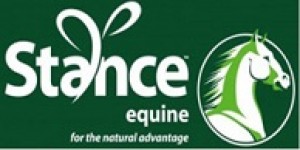Posted: 1st February 2016 | Back to news feed

Horses suffering from a variety of health conditions, from laminitis to equine metabolic syndrome, need consume diets low in nonstructural carbohydrates (NSC) to help control blood glucose and insulin levels. While this task is easier now than it has been in the past thanks to nutritional advancements, finding the right low-NSC feed can still be challenging for some owners.
Recently, a pair of researchers from Australia took a closer look at an alternative low-NSC feed that could benefit such horses: copra, or coconut, meal (the dried, baked, and ground flesh of the coconut).
Tim Kempton, PhD, a researcher and CEO of Stance Global, in Brisbane, Queensland, along with Nerida Richards, PhD, of Equilize Horse Nutrition Pty Ltd, in Tamworth, New South Wales, employed four mature horses to examine the effect of copra meal on post-feeding glucose and insulin dynamics. Throughout the course of the study, each horse consumed each of the following treatments:
- 24-hour access to a mixed pasture (7% NSC);
- Pasture plus copra meal (Stance Equine CoolStance copra meal, 11% NSC);
- Pasture plus pellets (MitaVite Economix extruded and pelleted feed, 25.3% NSC); and
- Pasture plus sweet feed (Barastoc Cool Command, 33.7% NSC).
Horses receiving the copra meal, pellets, and sweet feed remained on pasture during the day and in a drylot overnight without access to hay or pasture. Each horse performed 30 minutes of trot work each morning, except for on days that blood was collected. On those days, the researchers collected blood samples at regular intervals after a meal to later analyze the horses’ glucose and insulin dynamics.
The team determined that:
- Pellets had both the highest percentage NSC digestibility (85%) and the highest post-meal plasma glucose and plasma insulin levels;
- Pasture and copra meal showed the lowest post-meal change in plasma glucose and, therefore, the lowest glycemic response;
- Pasture resulted in the lowest insulin response and peak insulin levels;
- Copra meal resulted in a rapid but small insulin response post-feeding that dropped to no higher than the response observed with low-NSC pasture within 60 minutes after feeding; and
- Sweet feed resulted in higher plasma glucose levels and a higher glycemic response compared to the pasture and copra meal, but similar insulin responses and peak insulin levels to copra meal.
The bottom line: Copra meal could be considered for use for those horses that necessitate a low-NSC diet that will cause minimal changes to their post-feeding glucose and insulin levels.
“The results of this study demonstrated that the NSC content of a feed ingredient will influence the post-feeding glycemic and insulin response to that feed, with low-NSC feeding giving significantly lower responses than higher NSC feeds.” said Kempton.
The insulin response to copra meal observed in this study was small both in magnitude and time in comparison to levels reported in the literature needed to induce laminitis and as such are unlikely to be physiologically significant, the team noted.
The study, "The post-feeding glycemic and insulin response to copra meal in horses," was published in Animal Feed Science and Technology.
For more information please visit www.stanceequine.co.uk
The Equestrian Index newsfeed is compiled from articles submitted by advertising members and expresses the opinions of those members. Watsons Directories Ltd shall not be held liable for any inaccuracies or mis-statements therein.